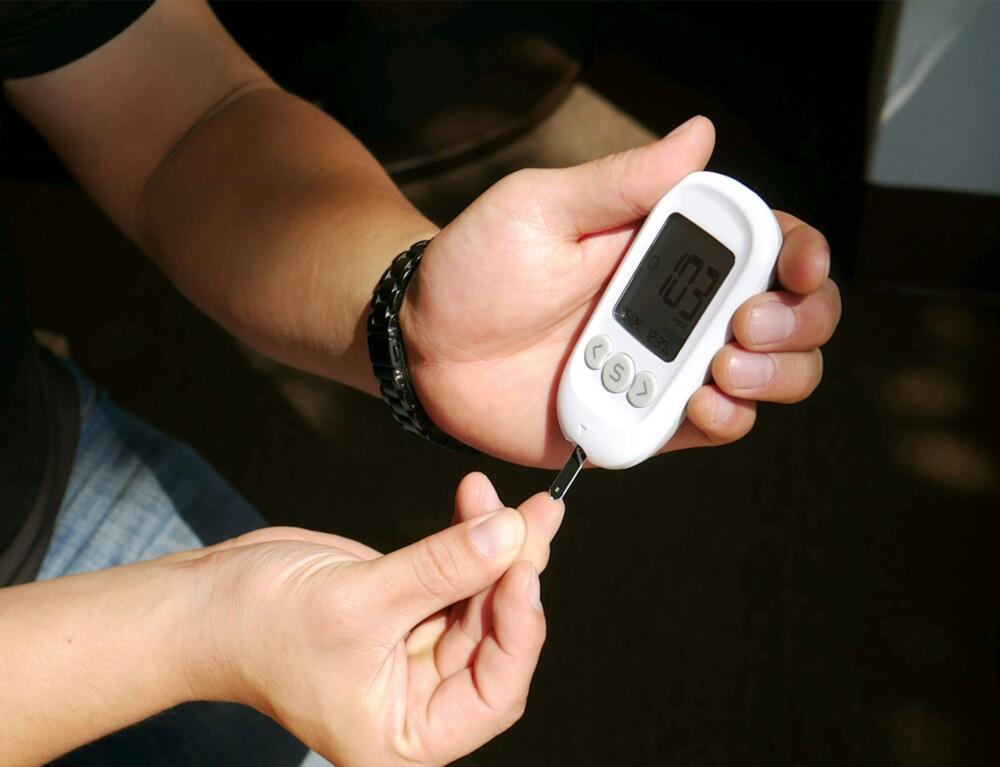What Is the Naturopathic Approach to Managing Diabetes in NYC?
The naturopathic approach to managing diabetes in NYC involves identifying the cause of the disorder. The NCCIH on naturopathic principles suggests that the symptoms are the body’s way to signal a deeper problem. Naturopaths use the healing power of nature to identify an underlying imbalance and treat the body as a whole.
Each type of diabetes wreaks havoc in different ways, and personalized protocols help restore metabolic functions. An ADA overview of diabetes types has broken down diabetes mellitus into two types: Type 1 and Type 2. One shows that the body fails to maintain proper glycemic control (type 1). The other tells us that the body develops insulin resistance (type 2).
This fuels oxidative stress and glycemic damage in the body, which is exacerbated by high-stress urban living and environmental factors like poor air quality or a chaotic lifestyle.
Studies by Ashis Talukder at Khulna University show that Type 2 Diabetes has a 10.8% prevalence in urban areas, whereas rural numbers are kept at 7.4%.
Urban pollution exacerbates oxidative stress, so a protocol based on lifestyle interventions, detox, mitochondrial and gut support, and adaptogens helps promote holistic wellness.
How Do Urban Environmental Factors in NYC Contribute to Diabetes Risk?
Urban environmental factors in NYC contribute to diabetes risk because they create an “obesogenic environment.” The CDC outlined environmental risk factors such as air quality, sedentary commutes, and fast-food accessibility that trigger inflammation and hyperglycemia, adding to the metabolic stress.
Below are some of the most common environmental factors that increase the risk of diabetes:
- Air Pollution: Pollutants trigger inflammation and oxidative stress, leading to endothelial dysfunction. This impairs insulin signaling, causing hyperglycemia and a higher chance of developing diabetes. Studies at the Chinese University of Hong Kong suggest an increased risk of prediabetes with prolonged PM2.5 exposure. This applies even below the levels recommended by the EPA on urban air quality.
- Sedentary Life: Sitting times during commutes prevent opportunities for movement. Data from the Bureau of Labor Statistics shows that the average person spends 40-50% of their workday sitting. Once you add sitting during commutes to that list, it worsens glycemic control.
- Processed Foods: Processed foods lead to insulin spikes because of their high content of refined carbs and sugar. These are processed too quickly and lead to a rapid glucose rise in the absence of fiber. This eventually worsens glycemic control.
- Endocrine Disruptors: Exposure to chemicals present in air pollution disrupts the endocrine system and impairs hormone signaling. These pollutants trigger inflammatory stress and increase insulin resistance.
- Neighborhood Inequity: An underdeveloped neighborhood with poor walkability suppresses your ability to perform physical activities. Studies done on disadvantaged neighborhoods by Drexel University show that diabetes risk increases by 12% in these circumstances.
Prolonged exposure to all these elements increases the risk of prediabetes and diabetes. This happens in children and adults alike, although prevalence is higher as we age.
Can NYC Pollution Accelerate Insulin Resistance?
NYC urban pollution accelerates insulin resistance by increasing oxidative stress. Toxins induce cellular damage as they trigger systemic inflammation. The inflammation then impairs the glucose uptake, which weakens the signals from insulin receptors.
With time, the body increases insulin demand to compensate for the resistance. This stresses the pancreatic beta-cells. When this is combined with the inflammatory and oxidative stress, it leads to beta-cell dysfunction and apoptosis.
A study by Phiwayinkosi V. Dludla at the University of Zululand shows that this increases the chances of developing Type 2 Diabetes.
Antioxidants mitigate the oxidative harm. Naturopaths integrate strategies for natural detox for diabetes, using nutrients like vitamin C, E, and other antioxidants.
Anti-inflammatory botanicals such as curcumin and quercetin are also useful to reduce low-grade systemic inflammation caused by air pollution.
Lifestyle buffering tools also decrease the risk of prediabetes. Indoor air filtration, minimizing exposure during peak time, and wearing masks where appropriate prevent excessive exposure. This allows the body to heal internally.
What Root Causes Does Naturopathy Target for Diabetes Control?
For diabetes control, naturopathy targets root causes such as nutrient deficiencies and microbiome imbalances.
ADA data on food nutrition shows that many Americans face food insecurity, as they have limited access to healthy ingredients. This is especially the case in urban areas, where most people buy their food from supermarkets.
The average holistic treatment for Type 2 Diabetes includes the following:
Changes to the gut microbiome are connected to issues such as insulin resistance, metabolic syndrome, and type 2 diabetes.
NCIH studies on gut health show that probiotics influence the immune response and help the body maintain a healthy microbiome. Studies by Kecheng Yao say that three months of probiotic treatment reduces HbA1c levels by 0.38%.
- Micronutrient Deficiencies
Deficiencies hinder enzyme activity and create bottlenecks in the metabolic process. Nutrients such as Vitamin D, Chromium, magnesium, and zinc restore the metabolic flux and improve cellular resilience to oxidative stress.
Inflammation contributes to microvascular damage in diabetes and reduces tyrosine phosphorylation. This impairs insulin signals and contributes to the progression of diabetes.
Botanicals, antioxidants, and stress reduction techniques are used to restore insulin signaling.
Reversing prediabetes without meds is possible once you tap into these root causes. A strategy that blends dietary changes and microbiome support with nutrient repletion, antioxidant treatments, and inflammatory therapy helps with insulin resistance over time.
How Does Gut Health Influence Blood Sugar Stability in City Dwellers?
Gut health influences blood sugar stability in city dwellers through the production of short-chain fatty acids (SCFAs). This improves insulin sensitivity and regulates inflammation, which disrupts the balance in the microbiota.
Probiotics are commonly used to reduce postprandial glucose.
Good bacteria ferment the dietary fiber into SCFAs. This improves enteroendocrine signal production, which maintains the epithelial barrier integrity. With time, this leads to the development of leaky gut syndrome, allowing toxins to pass through the barrier.
High blood glucose is frequently caused by sweeteners present in urban NYC diets. Data from the University of Granada show that NAS consumption increases glycemic response by more than 30%, most of which is felt in the gut.
Microbiome therapies that include probiotics and prebiotics reduce inflammatory markers and decrease blood glucose in diabetic and prediabetic patients.
Studies at the Harbin University of Commerce also show that only an average of 50% of patients with diabetes receive insulin therapy. This is due to the high cost of medication. The same studies reveal that probiotics are frequently used as a tool to reduce blood glucose, decreasing the need for insulin shots.
Which Natural Interventions Help Regulate Blood Sugar in NYC Patients?
Natural interventions like herbs and supplements are seen as natural ways to cure diabetes permanently. A safe supplemental strategy with meds regulates blood sugar in NYC patients, reducing the need for artificial insulin in the long run.
Common natural remedies include the following:
- Berberine – Activates AMPK pathways and suppresses hepatic gluconeogenesis
- Cinnamon – Sensitizes insulin receptors
- Alpha-lipoic acid – Scavenges free radicals and regenerates endogenous antioxidants
- Fenugreek – Slows the absorption of carbohydrates in the gut
- Glucomannan – Slows carbohydrate digestion and modulates gut microbiota
Nutrients like chromium are also commonly implemented in natural strategies to control and potentially cure diabetes. NIH data on chromium shows an ability to potentiate insulin action. This activates the insulin receptors, reducing resistance with time.
Can Herbal Supplements Replace Conventional Medications for Some?
Herbal supplements can replace conventional medicine for some patients who are not in advanced diabetes stages. Reddit users have discovered the adjunctive role of hypoglycemic herbs in treating diabetes.
The right herbs mimic pharmaceutical action, making them safe alternatives for prediabetic patients.
Metformin alternatives such as fenugreek, cinnamon, and berberine are almost as powerful as actual drugs. Their purpose is to reduce hepatic gluconeogenesis and improve insulin sensitivity, preventing diabetes progression.
It’s always best to implement safe integration strategies for Type 1 diabetes in naturopathic care.
Consider starting with low doses, depending on the plan you received from your NYC naturopath. Be careful of drug-herb interactions, as they potentiate side effects. Monitoring prevents adverse outcomes and tells you whether it can fully replace conventional medicine in your case.
How Can Lifestyle Adjustments in NYC Support Diabetes Reversal?

Lifestyle adjustments in NYC support diabetes reversal by lowering the glycemic index and mobilizing glucose levels.
Dense, fast-paced environments such as New York cause people to adopt unhealthy diets. However, a diabetes diet supports reversal and reduces insulin sensitivity.
Naturopaths recommend a combination of exercise and a good diet to minimize blood sugar spikes and improve metabolic performance. Common NYC-tailored advice includes the following:
- Focus on Low-Glycemic Foods
The glycemic response changes depending on the food types consumed. The CDC diabetes diet guidelines recommend combining non-refined carbs with protein, healthy fats, and fiber. This decreases glucose absorption and slows the progression of diabetes.
Common low glycemic foods in diabetes diets include:
- Steel-cut oats
- Barley
- Quinoa
- Legumes
- Non-starchy veggies
- Berries
Consider following the plate method. Half should contain non-starchy veggies, a quarter contains carbs, and the other quarter lean protein.
Fasting resets insulin sensitivity because it prolongs the low insulin times. Studies by Elizabeth Sutton at the Pennington Biomedical Research Center reveal that 24-hour fasting improves insulin sensitivity by 54% the next morning.
Intermittent fasting with 12/12, 14/10, or 16/8 windows leads to lower fasting glucose. It also promotes weight loss. This is beneficial, as obesity is a known contributor to diabetes.
Busy people in NYC should consider skipping breakfast on days when they have an early meeting. If you work from home and your schedule allows it, eat only during 10 AM-6 PM. Work with a naturopath to determine a good plan.
Exercise mobilizes glucose levels and improves sensitivity to insulin. High-intensity interval training (HIIT) has been shown to boost fasting glucose levels, according to studies at the University of British Columbia, Okanagan.
Just 20-30 minutes of moderate post-meal exercise lowers the chance of a glycemic spike. Consider mixing this with walking instead of using public transportation, using stairways, or taking the occasional walk through the park.
Mindfulness curbs emotional eating, which happens when you’re stressed or distracted. Some good strategies include:
- Take a pause before you eat and assess whether you’re really hungry
- Chew slowly when eating
- Eat without distractions (such as watching TV)
- Have healthy emergency snacks when tempted (e.g., nuts and veggie sticks)
Meal prepping helps control your eating habits and prevents overeating.
What NYC-Friendly Exercise Routines Aid Glucose Management?
A NYC-friendly exercise routine, such as walking or taking the stairs, aids glucose management. For example, aerobics improves cardiovascular endurance and insulin sensitivity.
Resistance training also builds muscle mass, increasing your basal glucose capacity. With time, this improves insulin sensitivity. Activities like yoga regulate cortisol levels, which are known to drive hyperglycemia.
Be wary of post-exercise hypoglycemia, which is prominent among those who take insulin. Proper timing brings the best results, so consider creating a consistent schedule.
What Results Can NYC Residents Expect from Naturopathic Diabetes Care?
Patients can expect improvement in their blood sugar levels within 3 months of starting the treatment.
Personalized protocols achieve sustainable results, and lifestyle adjustments sustain long-term remission. Continuous glucose monitoring is essential, as well as the A1C level and quality of life metrics.
An anonymized case at Vale Do Rio Dos Sinos University on Type 2 Diabetes patients showed significant improvement in blood glucose levels after 90 days of probiotics. A total of 20 patients received probiotics from the Bacillus clausii. This decreased blood sugar while increasing HDL plasma levels and intestinal microbiota.
How to Get Started with Naturopathic Diabetes Treatment in NYC?
Look up “naturopathic doctor for diabetes near me” to receive diabetes treatment assistance. Contact Dr. Susan Cucchiara to get started with naturopathic diabetes treatments in NYC. This includes telehealth options and in-office visits for the initial consultation, where we assess individual needs.
Lab testing reveals hidden imbalances that Dr. Cucchiara uses to create a personalized plan. Follow-up care adjusts tailored plans based on your response. Keep insurance considerations in mind and start in person, if you can.







